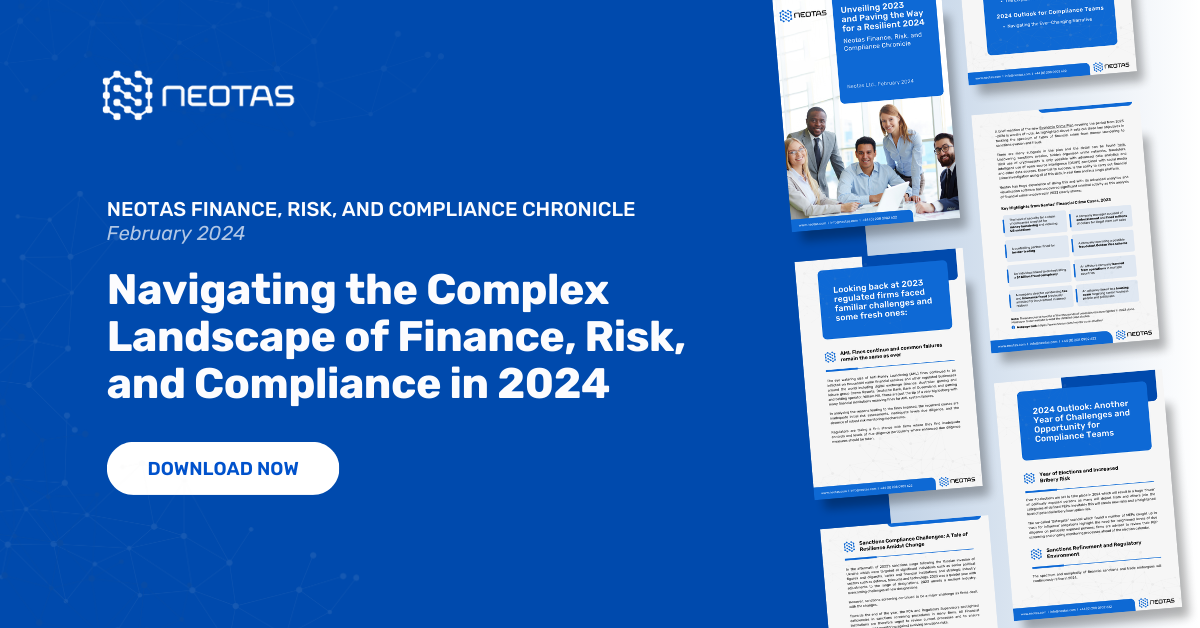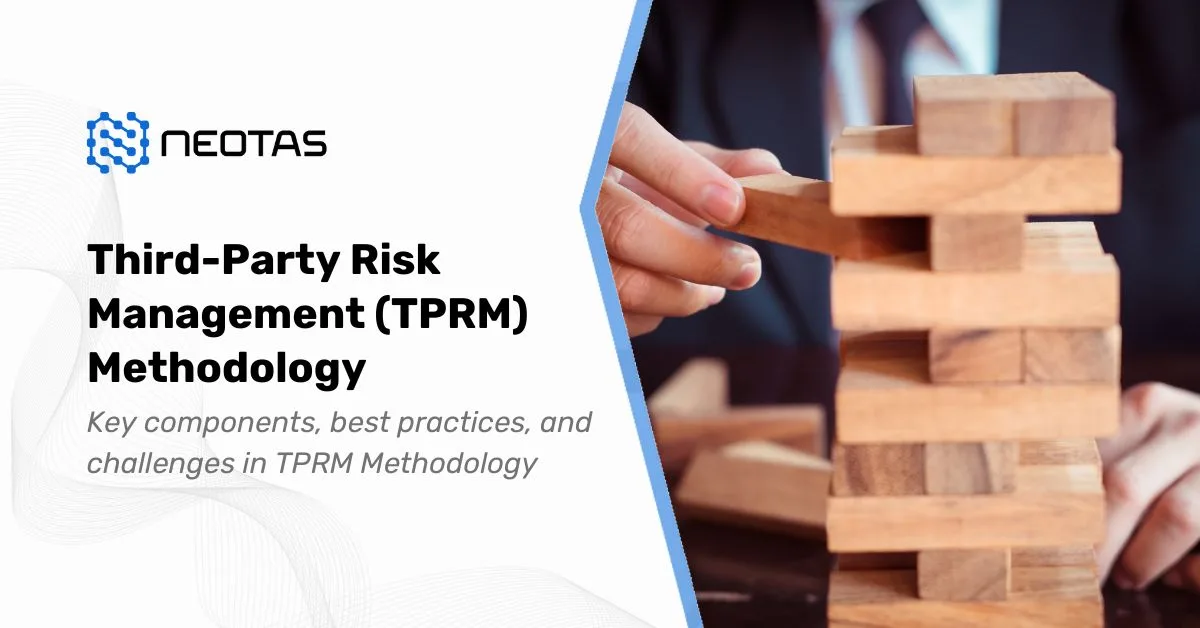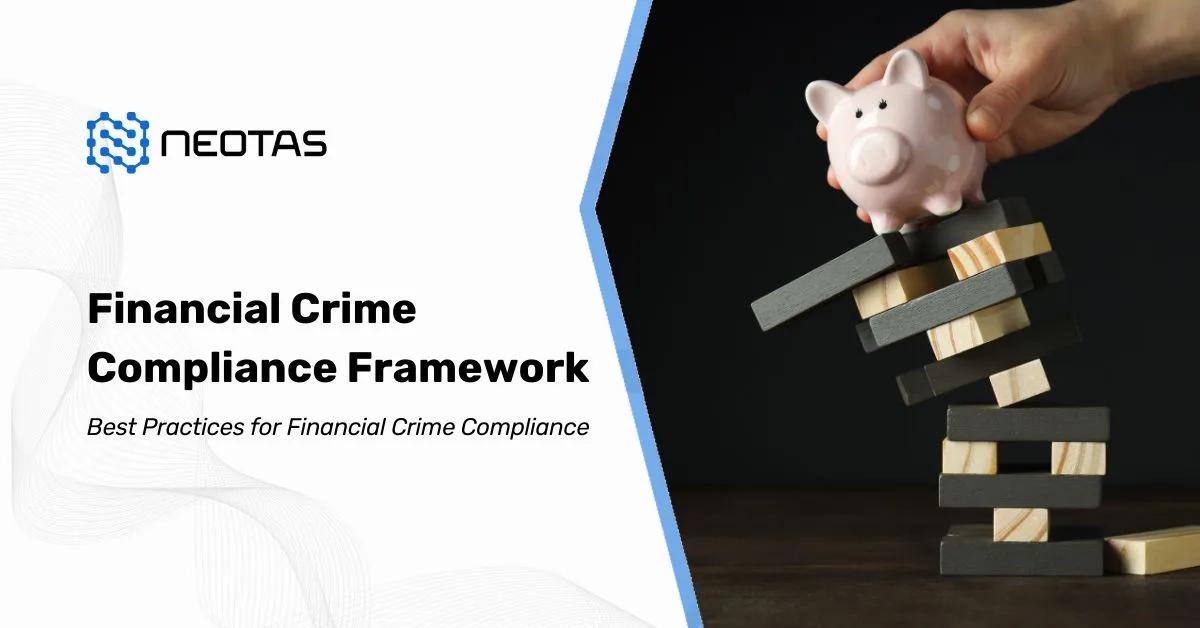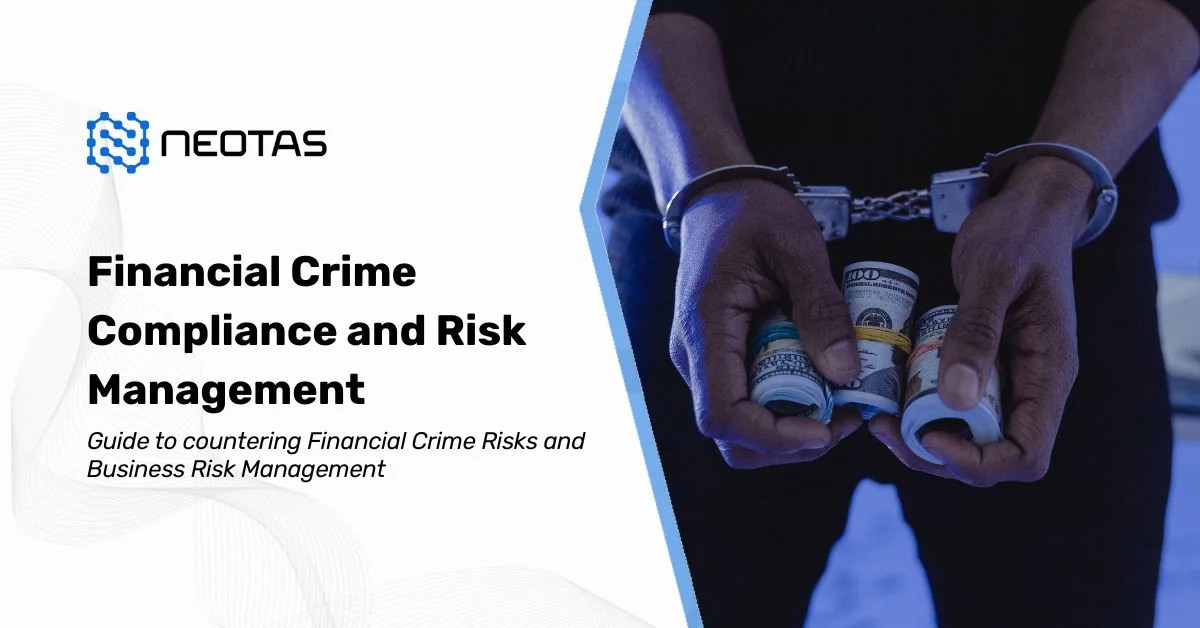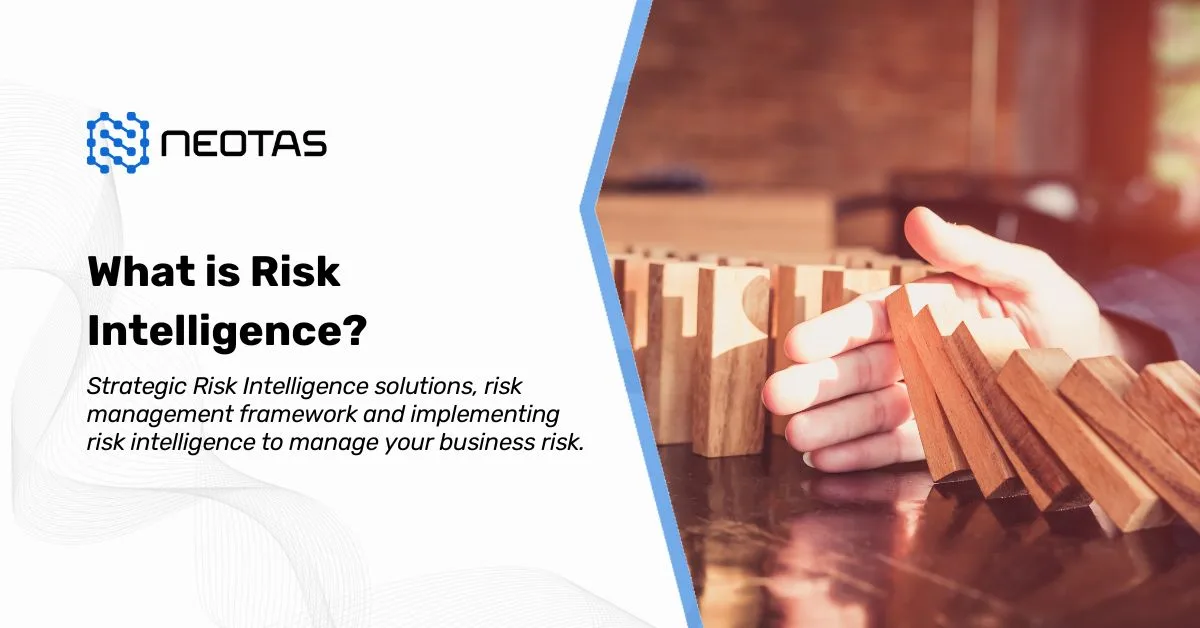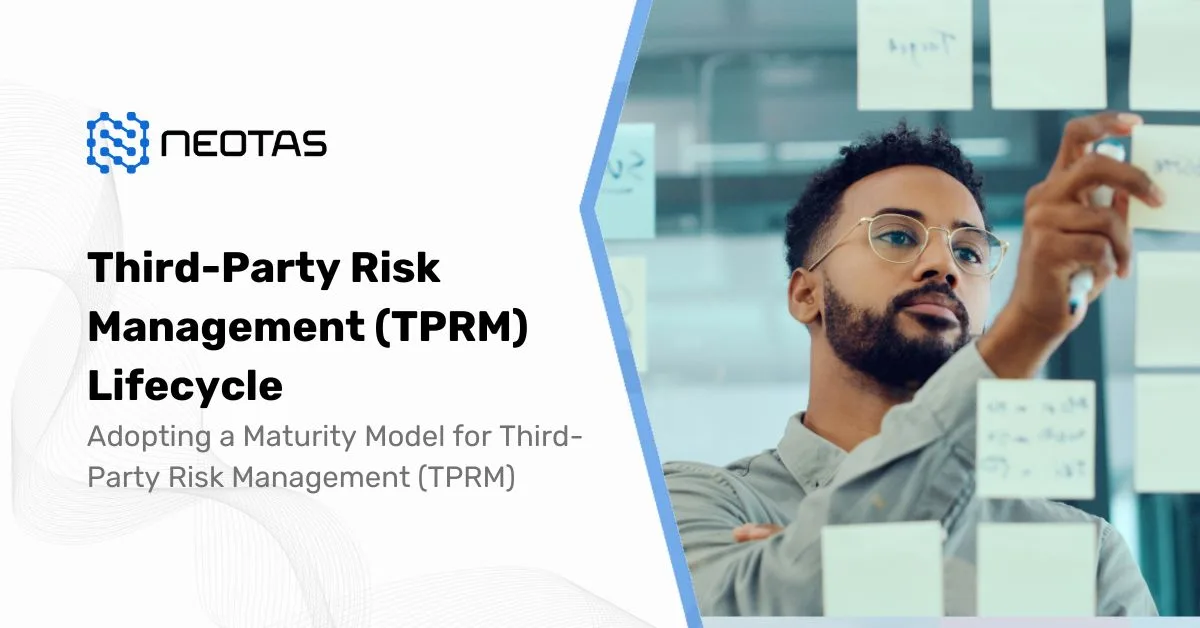OSINT Tools and Techniques
A Comprehensive Guide on Open Source Intelligence Tools and Techniques
This article presents an in-depth exploration of Open Source Intelligence (OSINT) tools, OSINT Framework, and OSINT techniques, offering a comprehensive guide for practitioners seeking to harness publicly available information from the internet. OSINT plays a pivotal role in cybersecurity, threat intelligence, investigations, and decision-making processes. This document delves into a multitude of OSINT techniques, methodologies, tools, and best practices, providing readers with a detailed understanding of how to effectively collect, analyse, and utilise open source data.
Table of Contents:
- Introduction to Open Source Intelligence (OSINT)
- Definition and Importance of OSINT
- OSINT in Cybersecurity and Beyond
- Legal and Ethical Considerations
- OSINT Methodology and Process
- The OSINT Lifecycle
- Planning and Objective Setting
- Data Collection
- Data Processing and Analysis
- Reporting and Action
- Search Engine Queries and Advanced Operators
- Boolean Operators: AND, OR, NOT
- Site-Specific Searches (site:)
- Specialised Search Engines and Google Dorks
- Advanced Search Techniques
- Social Media Analysis and Monitoring
- Social Media Platforms and Their Significance
- Hashtag Tracking and Trend Analysis
- Sentiment Analysis and Emotional Context
- Social Media Scraping Tools and Automation
- Metadata Analysis and Digital Footprinting
- Extracting Metadata from Images, Documents, and Files
- Privacy Implications and Metadata Removal
- Establishing a Digital Footprint
- Tools for Metadata Analysis
- Website Analysis and Web Scraping
- Extracting Information from Websites and HTML Sources
- Web Crawling and Scraping Techniques
- Analysing HTML Source Code and Hidden Information
- The Role of Archive Services
- Reverse Image Search and Visual OSINT
- Image Recognition Engines and Their Applications
- Identifying Source and Usage of Images
- Detecting Manipulated or Fake Images
- Incorporating Visual Analysis into OSINT
- Email Headers and Communication Analysis
- Decoding Email Headers for Tracking
- Identifying Email Path and Origins
- SPF, DKIM, and DMARC Records for Email Verification
- Unveiling Communication Patterns
- Geolocation and Mapping Tools
- IP Address Geolocation and Mapping
- Wi-Fi Network Location Tracking
- Mapping Digital and Physical Movements
- Geo-Tagged Data and Its Significance
- Dark Web Monitoring and Threat Intelligence
- Understanding the Dark Web and Its Role in OSINT
- Navigating the Dark Web Safely
- Extracting Threat Intelligence from Underground Forums
- Dark Web Tools and Techniques
- Language Translation and Multilingual OSINT
- Language Barriers and Their Implications
- Machine Translation vs. Human Translation
- Challenges and Nuances of Multilingual OSINT
- Cross-Cultural Communication Analysis
- Network Analysis and Infrastructure Mapping
- Analysing Network Traffic and Data Flow
- DNS Lookups and WHOIS Queries
- Tracing Network Paths and Hops
- Identifying Online Infrastructure Patterns
- Data Breach Databases and Privacy Implications
- Utilising Data Breach Repositories
- Analysing Leaked Information and Risks
- Personal Privacy and Data Protection Concerns
- Balancing OSINT with Privacy Rights
- API Integration for Structured Data
- Leveraging Public APIs for OSINT
- Retrieving Structured Data from Social Media, Financial Markets, and More
- Considerations for API Key Management and Rate Limits
- Enhancing OSINT with API-Driven Insights
- Best Practices, Challenges, and Future Trends
- Ethical and Legal OSINT Practices
- Maintaining an Audit Trail and Documenting Findings
- Overcoming Challenges in OSINT
- Emerging Trends in OSINT Techniques
Let’s get started:
What is OSINT and why is it important?
Open Source Intelligence (OSINT) refers to the practice of collecting and analysing information from publicly available sources on the internet. These sources encompass a wide array of data, including websites, social media platforms, online forums, news articles, public records, and more. OSINT is a crucial component of modern information gathering, enabling individuals, organisations, and security professionals to gain insights, make informed decisions, and conduct investigations.
The importance of OSINT lies in its ability to provide valuable context and knowledge about individuals, organisations, events, and trends. It empowers various domains, including cybersecurity, threat intelligence, law enforcement, business intelligence, competitive analysis, and academic research. OSINT helps uncover hidden patterns, connections, and potential risks that might not be evident through other means.
OSINT in Cybersecurity and Beyond:
In the realm of cybersecurity, OSINT plays a pivotal role in identifying potential threats, vulnerabilities, and risks. By monitoring online activities, discussions, and emerging trends, cybersecurity professionals can proactively detect and mitigate potential security breaches. OSINT assists in understanding attack vectors, predicting emerging threats, and enhancing incident response capabilities.
Beyond cybersecurity, OSINT is widely applicable in diverse fields. Law enforcement agencies use OSINT to track criminals, gather evidence, and locate missing persons. Businesses utilise OSINT for competitive analysis, market research, and brand reputation management. Journalists employ OSINT to verify information, investigate stories, and uncover hidden agendas. Researchers leverage OSINT to study social behaviors, public sentiments, and emerging trends.
Legal and Ethical Considerations:
While OSINT offers valuable insights, its practice is bound by legal and ethical considerations. It’s imperative to respect privacy rights, data protection laws, and terms of use for online platforms. OSINT practitioners must avoid invasive actions, such as hacking, unauthorised access, or intrusive surveillance. Collecting information should only be done from publicly accessible sources, adhering to the principle that if information is publicly available, it can be collected.
Ethical OSINT involves transparency, honesty, and responsible use of gathered data. It’s crucial to be mindful of potential harm or unintended consequences that might arise from the dissemination of collected information. Balancing the pursuit of knowledge with ethical considerations ensures that OSINT contributes positively to various endeavors while safeguarding individual rights and societal norms.
In this article, we will delve into an array of OSINT techniques, methodologies, and tools, providing comprehensive insights into how OSINT can be effectively harnessed to gather, analyse, and utilise publicly available information. We’ll explore each technique’s nuances, practical applications, challenges, and best practices, equipping practitioners with the knowledge to conduct ethical and effective OSINT activities across different domains.
OSINT Methodology and Process
Open Source Intelligence (OSINT) is a structured and systematic approach to gathering and utilising publicly available information from various online sources. The OSINT methodology follows a well-defined lifecycle that encompasses planning, data collection, processing, analysis, reporting, and action. This section outlines each stage of the OSINT process, highlighting its significance and providing insights into best practices.
1. The OSINT Lifecycle: The OSINT process is often represented as a cyclical lifecycle, reflecting the iterative nature of information gathering and analysis. This lifecycle consists of the following stages:
- Planning and Objective Setting: Define the purpose of your OSINT activity, whether it’s threat detection, competitive analysis, or investigative research. Set clear objectives, outline the scope of your investigation, and identify the types of information you need to gather.
- Data Collection: Gather data from various publicly available sources, such as websites, social media platforms, online databases, and public records. Cast a wide net to ensure comprehensive coverage of your subject matter.
- Data Processing and Analysis: Organise and process the collected data to extract relevant information. Analyse the data for patterns, connections, and insights. This stage involves filtering out noise and identifying key data points that align with your objectives.
- Reporting and Action: Compile your findings into a structured report that communicates the insights derived from your analysis. The report should provide clear and actionable recommendations based on the OSINT data. The information can inform decision-making, threat mitigation, or strategic planning.
The OSINT lifecycle is iterative, meaning that the insights gained from one cycle can inform and refine subsequent cycles. As the digital landscape evolves and new data becomes available, OSINT practitioners continuously iterate through this process to stay current and adapt to emerging trends.
2. Planning and Objective Setting: Effective OSINT activities begin with careful planning and objective setting. This stage involves:
- Identifying the purpose of your OSINT effort, whether it’s related to cybersecurity, business intelligence, or investigative research.
- Defining clear and measurable objectives that guide your data collection and analysis efforts.
- Outlining the scope of your investigation, including the specific topics, entities, or events you intend to study.
- Identifying potential data sources and techniques that align with your objectives.
Proper planning ensures that your OSINT efforts are focused, efficient, and aligned with your goals. It helps prevent data overload and ensures that the collected information is relevant and valuable.
3. Data Collection: Data collection involves gathering information from a diverse range of sources. These sources may include:
- Publicly accessible websites and web pages.
- Social media platforms, including posts, profiles, and discussions.
- Online forums, blogs, and discussion boards.
- News articles and press releases.
- Public records, government databases, and court documents.
- Geolocation and mapping data.
- Specialised search engines and data repositories.
Effective data collection requires employing a combination of search techniques, tools, and resources to ensure comprehensive coverage. It’s essential to validate the credibility and authenticity of the sources to ensure the accuracy of the collected data.
4. Data Processing and Analysis: Once the data is collected, it needs to be processed and analysed to extract meaningful insights. This stage involves:
- Cleaning and organising the data to remove duplicates, irrelevant information, and noise.
- Applying filters and sorting mechanisms to focus on relevant data points.
- Identifying patterns, connections, and trends within the data.
- Cross-referencing information from multiple sources to verify accuracy.
- Extracting actionable intelligence that aligns with your objectives.
Data processing and analysis require critical thinking, attention to detail, and the ability to draw meaningful conclusions from the collected information. Various analytical tools and techniques can aid in this process, such as data visualisation, link analysis, and sentiment analysis.
5. Reporting and Action: The final stage of the OSINT process involves creating a comprehensive report that communicates your findings and recommendations. A well-structured report should include:
- Executive summary: A concise overview of the key findings and recommendations.
- Methodology: Explanation of the data collection and analysis methods employed.
- Insights: Presentation of the discovered patterns, trends, and connections.
- Visualisations: Graphs, charts, and diagrams that enhance understanding.
- Recommendations: Actionable steps based on the insights derived from the OSINT analysis.
The report should be tailored to the intended audience, whether it’s senior management, law enforcement, or other stakeholders. The goal is to provide clear and relevant information that informs decision-making, supports strategic planning, or contributes to the overall objectives of the OSINT activity.
The OSINT methodology and process provide a systematic approach to gathering, analysing, and utilising publicly available information. By following the stages of the OSINT lifecycle, practitioners can ensure that their efforts are well-planned, focused, and actionable. Effective OSINT requires a combination of technical skills, critical thinking, and ethical considerations to extract valuable insights from the vast sea of open source data.
OSINT Tools and Techniques
Search Engine Queries and Advanced Operators
Boolean Operators: AND, OR, NOT: Boolean operators are fundamental tools for refining search queries and obtaining precise results from search engines. Understanding how to use these operators effectively enhances the accuracy and relevance of your search:
- AND: This operator narrows down your search by requiring that all specified terms appear in the search results. For example, “cybersecurity AND threat intelligence” will retrieve results containing both terms.
- OR: The OR operator broadens your search by requesting results that include either of the specified terms. For instance, “cloud computing OR virtualisation” will yield results related to either concept.
- NOT: By using NOT, you can exclude specific terms from your search results. For example, “data privacy NOT GDPR” will retrieve information about data privacy excluding references to GDPR.
Site-Specific Searches (site:): The site: operator enables you to focus your search on a specific website or domain. This can be immensely valuable when seeking information from a particular source:
- For example, “site:wikipedia.org artificial intelligence” will yield results exclusively from Wikipedia pages related to artificial intelligence.
Specialised Search Engines and Google Dorks: Specialised search engines cater to specific types of data, facilitating targeted searches. Google Dorks are custom search queries that leverage advanced operators to uncover hidden or sensitive information:
- Shodan: A specialised search engine for internet-connected devices, allowing you to find specific devices (e.g., webcams, routers) based on various parameters.
- Censys: Focuses on searching for internet devices and their associated information.
- Google Dorks: These are powerful queries that help reveal sensitive or hidden data. For instance, “filetype:pdf confidential” will search for PDF files containing the term “confidential.”
Advanced Search Techniques: Mastering advanced search techniques allows you to retrieve highly specific information:
- Quotation Marks: Placing terms within quotation marks (“”) searches for exact phrases. For example, “machine learning” will find instances where the phrase is used as is.
- Wildcards (*): Employing an asterisk as a wildcard substitutes for unknown terms. “Internet of * security” will yield results that complete the phrase with various terms.
- Filetype: By using “filetype:”, you can search for specific file types. “cybersecurity filetype:ppt” will find PowerPoint presentations related to cybersecurity.
- Intitle and Inurl: These operators search for keywords within page titles or URLs. “intitle:OSINT techniques” will find pages with “OSINT techniques” in the title.
- Related: Using “related:” before a URL retrieves websites related to that address. “related:example.com” will find sites related to example.com.
By mastering these advanced search techniques, you can conduct highly targeted searches, uncover hidden information, and retrieve specific types of data. This proficiency is invaluable for OSINT practitioners seeking to efficiently gather relevant information from the vast expanse of the internet.
Social Media Analysis and Monitoring
Social Media Platforms and Their Significance: Social media platforms have become a goldmine of information and insights due to their widespread adoption and user-generated content. Understanding the characteristics and significance of different platforms is crucial for effective social media analysis:
- Facebook: A diverse platform with personal profiles, pages, groups, and events, offering insights into personal interests, affiliations, and interactions.
- Twitter: Known for real-time updates, trending topics, and rapid information dissemination.
- Instagram: Emphasises visual content and offers insights into lifestyle, preferences, and trends.
- LinkedIn: Primarily used for professional networking, job-related information, and business connections.
- Reddit: A platform for discussions and niche communities, providing insights into specific interests and viewpoints.
Hashtag Tracking and Trend Analysis: Hashtags are essential for categorising and indexing content on social media. Tracking hashtags can reveal emerging trends, topics of interest, and public sentiments:
- Monitoring Trends: Keeping an eye on trending hashtags helps identify popular discussions and current events.
- Identifying Influencers: Analysing hashtag usage can uncover key influencers and thought leaders in specific domains.
- Crisis Detection: Monitoring hashtags can provide early indications of potential crises or controversies.
Sentiment Analysis and Emotional Context: Sentiment analysis involves determining the emotional tone behind text or content. This technique offers insights into public opinions, reactions, and attitudes:
- Positive, Negative, Neutral: Sentiment analysis classifies text as positive, negative, or neutral, helping gauge public sentiment toward a subject.
- Emotion Detection: Advanced sentiment analysis can identify specific emotions like joy, anger, fear, or sadness.
- Brand Reputation Management: Organisations use sentiment analysis to understand how their brand is perceived and make informed decisions.
Social Media Scraping Tools and Automation: To effectively analyse social media data, scraping tools and automation are invaluable. These tools streamline data collection and analysis:
- Web Scrapers: Tools like Scrapy, Beautiful Soup, and Selenium enable the automated collection of data from social media platforms.
- APIs: Many social media platforms offer APIs that provide structured data, allowing for more controlled and efficient data retrieval.
- Social Media Management Tools: Platforms like Hootsuite and Sprout Social assist in scheduling posts, tracking engagement, and managing multiple accounts.
- Text Analytics Libraries: Tools like NLTK and spaCy aid in processing and analysing textual data extracted from social media.
Automation Benefits: Automating social media data collection and analysis enhances efficiency and scalability:
- Real-Time Insights: Automation allows for real-time monitoring of social media activities and trends.
- Consistent Data Collection: Automation ensures consistent data gathering, reducing manual errors.
- Time Savings: Automated processes free up valuable time for more in-depth analysis and strategic decision-making.
Ethical Considerations: While social media scraping and automation offer powerful insights, ethical considerations are essential. Respecting platform terms of service, user privacy, and data protection laws is paramount to responsible and ethical social media analysis.
Incorporating social media analysis into your OSINT toolkit provides a comprehensive understanding of public sentiment, emerging trends, and influencers, enabling better decision-making across various domains.
Metadata Analysis and Digital Footprinting
Extracting Metadata from Images, Documents, and Files: Metadata refers to hidden information embedded within files, offering insights into their origin, creation, and modification history. Extracting metadata from various types of files can reveal valuable information:
- Images: Image metadata, known as EXIF data, includes details like camera make and model, GPS coordinates, date taken, and even camera settings.
- Documents: Office documents such as PDFs, Word files, and presentations often contain metadata about the author, revision history, and editing timestamps.
- Audio and Video Files: Multimedia files can store metadata indicating recording devices, software, and editing processes.
Privacy Implications and Metadata Removal: Metadata can inadvertently disclose sensitive information, raising privacy concerns. Removing or minimising metadata helps mitigate these risks:
- Geolocation Privacy: Image metadata may reveal the location where a photo was taken, potentially compromising personal privacy.
- Redaction and Anonymisation: Removing or redacting metadata can help protect personal details before sharing files publicly.
- Tools for Metadata Removal: Software like ExifTool and metadata scrubbers enable users to remove or modify metadata from files.
Establishing a Digital Footprint: A digital footprint refers to the trail of online activities and interactions an individual leaves behind. Understanding how to establish and manage a digital footprint is crucial:
- Online Activities: Every action on the internet, from social media posts to website visits, contributes to your digital footprint.
- Professional Branding: Managing your online presence and showcasing your expertise can shape a positive digital footprint, especially for professionals and job seekers.
Tools for Metadata Analysis: Several tools facilitate metadata extraction and analysis, aiding in uncovering hidden information:
- ExifTool: A powerful command-line tool for reading, writing, and editing metadata in various file types.
- FOCA (Fingerprinting Organisations with Collected Archives): A tool for analysing metadata and extracting hidden information from documents and files.
- Doc Scrubber: Software for cleaning metadata from Word documents, Excel spreadsheets, and PowerPoint presentations.
- MAT (Metadata Anonymisation Toolkit): A tool for anonymising and removing metadata from various file types.
Benefits of Metadata Analysis: Metadata analysis offers various benefits across domains:
- Digital Forensics: Law enforcement and investigators use metadata analysis to trace the origin and history of files.
- Copyright Protection: Creators can embed copyright information in metadata to protect their intellectual property.
- Evidence Authentication: Metadata analysis helps verify the authenticity and integrity of digital documents in legal proceedings.
Ethical Considerations: Metadata analysis involves ethical responsibilities. Respecting privacy, obtaining proper consent before sharing files, and ensuring metadata removal when necessary are critical practices.
Understanding metadata and digital footprints empowers OSINT practitioners to extract hidden insights, manage personal privacy, and enhance their investigative capabilities. By utilising appropriate tools and practices, metadata analysis becomes a valuable asset in the toolkit of any information analyst.
Website Analysis and Web Scraping
Extracting Information from Websites and HTML Sources: Websites are a rich source of information for OSINT practitioners. Extracting data from websites involves accessing and collecting content from web pages and HTML sources:
- Static Web Pages: These are simple HTML documents that can be easily parsed and scraped for information.
- Dynamic Web Pages: Some web content is generated dynamically through JavaScript. Advanced techniques like headless browsers can be used to interact with dynamic content.
Web Crawling and Scraping Techniques: Web scraping is the process of automatically extracting data from websites. Techniques for effective web scraping include:
- XPath and CSS Selectors: These allow you to target specific elements within the HTML structure for extraction.
- APIs: Some websites offer APIs that provide structured data, which can be accessed programmatically.
- Headless Browsers: Using browser automation tools like Selenium, you can simulate human interactions to access and scrape dynamic content.
- Rate Limiting and Ethical Scraping: Respect robots.txt files and adhere to website terms of use to ensure ethical and responsible scraping.
Analysing HTML Source Code and Hidden Information: Analysing the HTML source code of a website can reveal valuable insights:
- Metadata: Examine the metadata within the HTML source, including title tags, meta descriptions, and author information.
- Comments: Hidden comments in the HTML source might contain additional information about the website’s development or intentions.
- Hidden Elements: Some content might be hidden from normal users but present in the HTML source. Analysing these elements can provide deeper insights.
The Role of Archive Services: Archive services like the Wayback Machine (archive.org) capture snapshots of web pages over time, creating a historical record of websites:
- Historical Data: Archive services provide access to past versions of websites, allowing you to track changes and retrieve information that might have been removed or altered.
- Investigative Insights: Analysing historical web data can assist in tracing the evolution of a website, identifying trends, and understanding the context of certain events.
Benefits of Website Analysis and Web Scraping: Website analysis and web scraping offer several advantages:
- Data Collection: Extracting data from websites provides access to valuable information that might not be available through traditional sources.
- Trend Identification: Web scraping helps identify emerging trends, sentiment shifts, and popular topics.
- Competitor Analysis: Analysing competitor websites can yield insights into their strategies, offerings, and user engagement.
- Investigative Purposes: Website analysis is essential for digital investigations, journalism, and fact-checking.
Ethical Considerations: While web scraping offers powerful insights, ethical considerations are crucial. Respect website terms of use, robots.txt files, and copyright laws. Avoid overloading servers with excessive requests, as this can impact website performance.
By mastering website analysis and web scraping techniques, OSINT practitioners can efficiently extract relevant data, uncover hidden information, and gain deeper insights into online content. Ethical and responsible scraping practices ensure the integrity of OSINT activities.
Reverse Image Search and Visual OSINT
Image Recognition Engines and Their Applications: Image recognition engines, powered by artificial intelligence and machine learning, play a significant role in visual OSINT. These engines analyse and interpret images, allowing for various applications:
- Object Recognition: Identifying objects, landmarks, animals, and more within images.
- Facial Recognition: Matching faces to known individuals for identification and verification.
- Logo and Brand Detection: Recognising logos and brands in images to determine affiliations.
- Text Extraction: Extracting text from images, such as signs, posters, or screenshots.
Identifying Source and Usage of Images: Reverse image search is a technique that helps trace the origin and usage of images:
- Image Source: Reverse image search can reveal where else an image appears on the internet, helping identify the original source.
- Copyright Infringement: This technique aids in identifying unauthorised use of images and potential copyright violations.
- Verification: Verifying the authenticity of images shared in social media or news articles.
Detecting Manipulated or Fake Images: Visual OSINT also involves identifying manipulated or fake images:
- Image Forensics: Analysing metadata, pixel anomalies, and compression artifacts to detect image manipulation.
- Deepfake Detection: Using advanced algorithms to identify digitally altered videos or images that mimic reality.
- Watermark Analysis: Scrutinising watermarks for tampering or inconsistencies.
Incorporating Visual Analysis into OSINT: Incorporating visual analysis enriches OSINT investigations and insights:
- Contextual Information: Images provide contextual information that complements textual data, enhancing the understanding of events.
- Geo-Tagged Images: Extracting location information from images contributes to geospatial analysis and mapping.
- Social Media Verification: Verifying social media posts by analysing images and detecting potential manipulations.
- Crisis Monitoring: Monitoring and analysing images during crises can provide real-time visual data for situational awareness.
Benefits of Visual OSINT: Visual OSINT brings several benefits to the OSINT landscape:
- Enhanced Context: Visual data provides a richer context, allowing for more comprehensive insights.
- Verification: Visual analysis helps verify the authenticity of online content, reducing the spread of misinformation.
- Comprehensive Investigations: Incorporating visual elements can lead to more thorough and accurate investigations.
- Informed Decision-Making: Visual insights contribute to well-informed decisions across various domains.
Ethical Considerations: Visual OSINT must be approached with ethical considerations in mind. Privacy concerns related to facial recognition and image usage should be respected. Additionally, detecting and countering misinformation should be done responsibly to avoid further spread.
By leveraging image recognition technologies, reverse image searches, and visual analysis techniques, OSINT practitioners can amplify the depth and accuracy of their investigations. Visual OSINT is a valuable tool for uncovering hidden insights and verifying the authenticity of digital content.
Email Headers and Communication Analysis
Decoding Email Headers for Tracking: Email headers contain crucial information about the email’s journey, allowing for tracking and analysis:
- From: Reveals the sender’s email address.
- To: Displays the recipient’s email address.
- Date: Indicates when the email was sent.
- Subject: Provides the email’s subject line.
- IP Addresses: Lists the IP addresses of servers that handled the email.
Identifying Email Path and Origins: Analysing email headers reveals the path an email took from sender to recipient:
- Received: This section details each server the email passed through, helping trace the email’s route.
- X-Originating-IP: Reveals the sender’s original IP address, aiding in tracking.
SPF, DKIM, and DMARC Records for Email Verification: Email authentication mechanisms enhance email verification:
- SPF (Sender Policy Framework): Validates that the sender’s server is authorised to send emails on behalf of the domain.
- DKIM (DomainKeys Identified Mail): Ensures the email’s content has not been altered and verifies the sender’s domain.
- DMARC (Domain-based Message Authentication, Reporting, and Conformance): Provides guidelines for handling emails that fail SPF or DKIM checks.
Unveiling Communication Patterns: Analysing email communication patterns can yield insights:
- Frequency Analysis: Identifying how often communication occurs between individuals or groups.
- Time Analysis: Analysing the timing of emails to uncover patterns or trends.
- Keyword Analysis: Scrutinising keywords and phrases in emails for context and intent.
- Attachment Analysis: Examining attachments for potential threats or sensitive information.
Benefits of Email Header Analysis: Email header analysis offers valuable advantages:
- Fraud Detection: Detecting phishing attempts and fraudulent emails by scrutinising sender information.
- Origin Tracing: Tracing the origin of suspicious or unauthorised emails.
- Communication Mapping: Uncovering relationships, affiliations, and networks through email interactions.
- Threat Mitigation: Identifying potentially malicious emails or sources.
Ethical Considerations: Email header analysis involves ethical responsibilities. It’s important to respect privacy and data protection laws. Unintended consequences and potential harm should be considered when analysing and sharing email-related information.
By mastering email header decoding and communication analysis, OSINT practitioners can gain insights into email paths, origins, and communication patterns. This knowledge enhances the accuracy of investigations, assists in identifying potential threats, and contributes to informed decision-making.
Geolocation and Mapping Tools
IP Address Geolocation and Mapping: Geolocation tools help determine the physical location of an IP address:
- IP Geolocation Databases: These databases match IP addresses to specific geographic locations, enabling you to identify the country, region, city, and even latitude and longitude.
- Mapping APIs: Services like Google Maps API and Mapbox provide a visual representation of IP-based geolocation data.
Wi-Fi Network Location Tracking: Wi-Fi networks can be used for location tracking:
- MAC Address Tracking: Wi-Fi access points can track the unique MAC addresses of devices, allowing for real-time location updates.
- Triangulation: Multiple Wi-Fi access points can be used to triangulate a device’s position based on signal strength.
Mapping Digital and Physical Movements: OSINT practitioners can map digital and physical movements of individuals or entities:
- Social Media Check-ins: Mapping check-ins from platforms like Foursquare or Facebook provides insights into an individual’s physical whereabouts.
- Location History: Analysing location history data from smartphones or apps can create a timeline of movements.
Geo-Tagged Data and Its Significance: Geo-tagged data contains location information linked to digital content:
- Photos and Videos: Many images and videos captured by smartphones are geo-tagged, revealing the exact location where they were taken.
- Social Media Posts: Geo-tagged social media posts offer insights into user activities in specific locations.
- Metadata Analysis: Extracting geolocation data from metadata helps track the origin of digital content.
Benefits of Geolocation and Mapping Tools: Geolocation and mapping tools provide valuable insights:
- Investigative Analysis: Tracking physical and digital movements aids investigations in various fields, including law enforcement and journalism.
- Threat Detection: Monitoring geolocation data can help identify anomalies or potential security threats.
- Emergency Response: Geolocation tools assist in disaster response and locating individuals in distress.
- Business Insights: Location-based data can provide businesses with insights into customer behavior and preferences.
Ethical Considerations: Respecting privacy and ethical considerations is vital when using geolocation and mapping tools. Obtaining proper consent, adhering to data protection laws, and avoiding invasive surveillance practices are essential.
Mastering geolocation and mapping tools allows OSINT practitioners to uncover valuable insights, track movements, and enhance investigative capabilities. Responsible use of these tools ensures that they contribute positively to various domains while respecting individual rights and privacy.
Dark Web Monitoring and Threat Intelligence
Understanding the Dark Web and Its Role in OSINT: The Dark Web is a hidden part of the internet that is not indexed by traditional search engines. It includes websites, forums, and marketplaces that require specific software (such as Tor) to access. Understanding the Dark Web is crucial for comprehensive OSINT:
- Role in OSINT: The Dark Web contains valuable information for threat intelligence, cybersecurity, and law enforcement, as it is often used for illicit activities, discussions, and sharing of sensitive information.
Navigating the Dark Web Safely: Accessing the Dark Web requires precautions to ensure safety and anonymity:
- Use Tor Browser: Tor (The Onion Router) is a specialised browser that anonymises your connection and allows you to access .onion websites on the Dark Web.
- VPN and Security Measures: Using a virtual private network (VPN) along with Tor adds an extra layer of security.
- Operational Security (OpSec): Maintain strict OpSec practices to protect your identity and avoid exposing personal information.
Extracting Threat Intelligence from Underground Forums: Dark Web forums are hubs for discussions and information sharing among cybercriminals:
- Gathering Intelligence: Monitoring these forums provides insights into emerging threats, tactics, techniques, and procedures (TTPs) used by cybercriminals.
- Identifying Targets: Forums may discuss potential targets, vulnerabilities, and attack vectors, aiding in proactive defense.
Dark Web Tools and Techniques: OSINT practitioners can use tools and techniques to extract threat intelligence from the Dark Web:
- Crawlers and Scrapers: Specialised tools can scrape and collect data from Dark Web forums and marketplaces.
- Natural Language Processing: Analysing text data using NLP techniques helps extract meaningful insights from discussions.
- Image Analysis: Extracting information from images, screenshots, and memes shared on the Dark Web.
- Code Analysis: Analysing code snippets shared on the Dark Web can uncover malware or exploit techniques.
Benefits of Dark Web Monitoring and Threat Intelligence: Monitoring the Dark Web and extracting threat intelligence offers several advantages:
- Early Threat Detection: Detecting emerging threats and potential attacks before they reach mainstream platforms.
- Incident Response: Gathering intelligence allows organisations to prepare for and respond to potential cyber incidents.
- Predictive Analysis: Analysing Dark Web discussions can provide insights into upcoming cybercriminal activities.
Ethical Considerations: Engaging with the Dark Web requires careful ethical considerations:
- Legal and Ethical Boundaries: Engage with the Dark Web only for legitimate research and within the boundaries of the law.
- Avoiding Criminal Activity: Never participate in or support criminal activities on the Dark Web.
Effectively navigating the Dark Web, extracting threat intelligence, and employing ethical practices contribute to enhancing cybersecurity, threat detection, and incident response efforts. It’s imperative to approach Dark Web monitoring responsibly and use the information gathered for the greater good of digital security.
Language Translation and Multilingual OSINT
Language Barriers and Their Implications: Language barriers pose challenges in gathering and understanding open source intelligence (OSINT) from diverse sources around the world:
- Limited Access: Without translation, valuable information remains inaccessible to those who don’t understand the original language.
- Misinterpretation: Automated translations may lead to inaccuracies or misinterpretations, affecting the quality of intelligence gathered.
Machine Translation vs. Human Translation: Both machine and human translation have their merits and limitations:
- Machine Translation: Tools like Google Translate offer quick translations, but they may lack nuance and context, leading to errors.
- Human Translation: Professional human translators can provide accurate and contextually rich translations, but the process can be time-consuming and costly.
Challenges and Nuances of Multilingual OSINT: Multilingual OSINT involves addressing various challenges:
- Cultural Nuances: Different languages express ideas, humor, and context differently, requiring a deep understanding of cultural nuances.
- Slang and Idioms: Slang and idiomatic expressions can be difficult to translate accurately using automated tools.
- Ambiguity: Translations may introduce ambiguity, making it important to cross-reference and validate information.
Cross-Cultural Communication Analysis: Cross-cultural communication analysis involves interpreting interactions, behaviors, and messages across different languages and cultures:
- Contextual Interpretation: Analysing cross-cultural communication requires understanding the cultural context in which messages are shared.
- Intercultural Competence: Practitioners need to be familiar with cultural norms, taboos, and communication styles to interpret messages accurately.
- Uncovering Hidden Insights: Cross-cultural analysis can reveal insights that may not be apparent in a single-language analysis.
Benefits of Multilingual OSINT: Multilingual OSINT offers numerous benefits:
- Global Reach: Accessing and understanding information from a variety of languages extends the reach of OSINT efforts.
- Comprehensive Insights: Multilingual analysis provides a more complete picture of events, sentiments, and discussions.
- Early Warning: Monitoring different languages can help detect emerging trends, threats, or issues before they become widely known.
Ethical Considerations: Ethical considerations are vital in multilingual OSINT:
- Accuracy: Ensure translations are as accurate as possible to avoid misinterpretations and misinformation.
- Cultural Sensitivity: Respect cultural norms and sensitivities when analysing and sharing cross-cultural information.
Mastering multilingual OSINT requires a combination of language skills, cultural knowledge, and analytical prowess. It enables practitioners to gather diverse insights, navigate language barriers, and contribute to a more comprehensive understanding of global events and trends.
Network Analysis and Infrastructure Mapping
Analysing Network Traffic and Data Flow: Network analysis involves studying data traffic patterns to understand connections and behavior:
- Traffic Analysis: Monitoring and analysing network traffic to identify communication patterns and anomalies.
- Packet Inspection: Examining individual data packets to gather insights into the type of information being transmitted.
- Flow Data: Collecting flow data (e.g., NetFlow) for understanding communication between devices.
DNS Lookups and WHOIS Queries: DNS and WHOIS queries reveal information about domains and IP addresses:
- DNS Analysis: Investigating domain names and IP addresses to uncover relationships, affiliations, and potential threats.
- WHOIS Queries: Querying WHOIS databases to identify domain registrants and contact information.
Tracing Network Paths and Hops: Tracing network paths helps understand data routing and potential bottlenecks:
- Traceroute: Tracing the path that data packets take across networks, revealing intermediate devices (hops) and latency.
- Geolocation of IPs: Mapping IP addresses to geographical locations aids in understanding network topology.
Identifying Online Infrastructure Patterns: Analysing online infrastructure patterns involves recognising common components and their interconnections:
- Domain Infrastructure: Identifying domains, subdomains, and their relationships can reveal malicious or suspicious activities.
- CDN and Cloud Services: Recognising the use of content delivery networks and cloud services helps understand a target’s online presence.
Data Breach Databases and Privacy Implications
Utilising Data Breach Repositories: Data breach databases contain information from publicly disclosed breaches:
- Threat Intelligence: Analysing data breaches provides insights into vulnerabilities, compromised credentials, and attack vectors.
- Credential Stuffing Prevention: Monitoring breaches helps identify compromised accounts and prevent credential stuffing attacks.
Analysing Leaked Information and Risks: Analysing leaked data involves assessing potential risks and impact:
- Exposed Information: Identifying exposed personal or sensitive information, such as email addresses, passwords, and financial details.
- Risk Assessment: Evaluating the potential harm that leaked data could cause to individuals or organisations.
Personal Privacy and Data Protection Concerns: Using data breach repositories raises privacy and ethical concerns:
- Data Ownership: Respecting data ownership and privacy rights of individuals whose information has been exposed.
- Sensitive Information Handling: Ensuring responsible handling of sensitive information to avoid further harm or misuse.
Balancing OSINT with Privacy Rights: Balancing OSINT with privacy rights is crucial:
- Ethical Considerations: Ensuring OSINT activities respect privacy, data protection laws, and ethical guidelines.
- Informed Consent: Obtaining proper consent when collecting or using individuals’ data.
Effectively analysing network data and utilising data breach repositories contributes to threat intelligence, cybersecurity, and informed decision-making. Practitioners must handle data responsibly, respecting privacy rights and ethical considerations while harnessing the power of OSINT.
This article has provided an extensive exploration of Open Source Intelligence (OSINT) techniques, covering methodologies, tools, and best practices that empower practitioners to gather, analyse, and utilise publicly available information effectively. OSINT plays an indispensable role in cybersecurity, threat intelligence, investigations, and decision-making processes. As the digital landscape evolves, OSINT techniques will continue to adapt, making it essential for practitioners to stay informed, adhere to ethical guidelines, and employ responsible practices to ensure the integrity and efficacy of their OSINT endeavors.
Manage Business Risk with OSINT.
Neotas is an Enhanced Due Diligence Platform that leverages AI to join the dots between Corporate Records, Adverse Media and Open Source Intelligence (OSINT).
Schedule a Call or Book a Demo of Neotas Enhanced Due Diligence Platform.
Read More about Open Source Intelligence:
- OSINT Framework, OSINT Tools, OSINT Techniques, and how to use OSINT framework.
- Open Source Intelligence (OSINT) in the Fight Against Financial Crime
- Reduce & Manage Business Risk with Neotas Open Source Intelligence (OSINT) Solutions
- Using OSINT for Sources of Wealth Checks
- Open Source Intelligence (OSINT) based AML Solution sees beneath the surface
- Enhancing ESG Risk Management Framework with Neotas’ OSINT Integration
- How Open Source Intelligence (OSINT) is transforming enhanced due diligence and investigations in AML compliance
- Detecting Modern Slavery In Your Supply Chain using Open-source Intelligence
- Creating an effective framework for managing risk with suppliers and third parties using open-source intelligence (OSINT)
- Using Open Source Intelligence For Enhanced Due Diligence

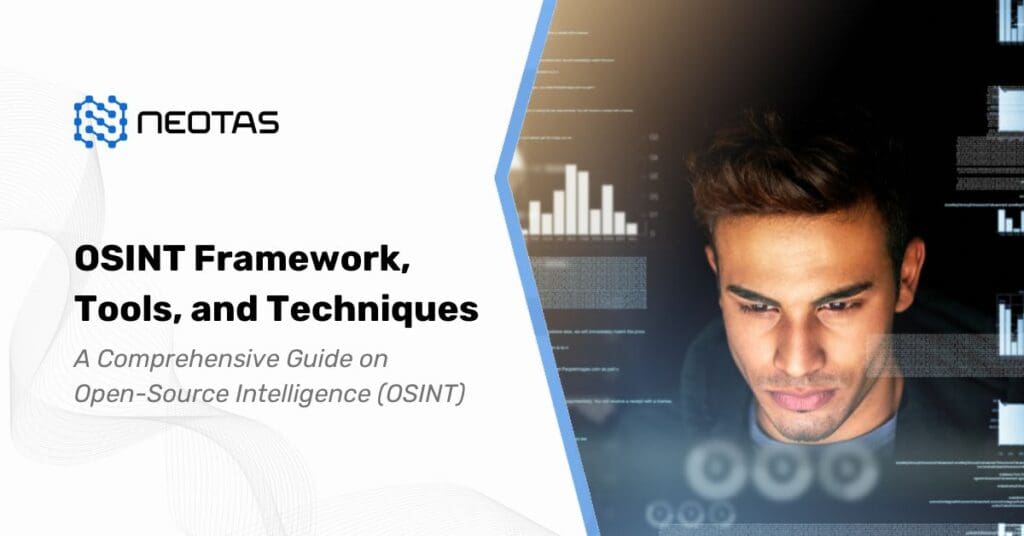

 Financial Crime Compliance Trends 2024
Financial Crime Compliance Trends 2024